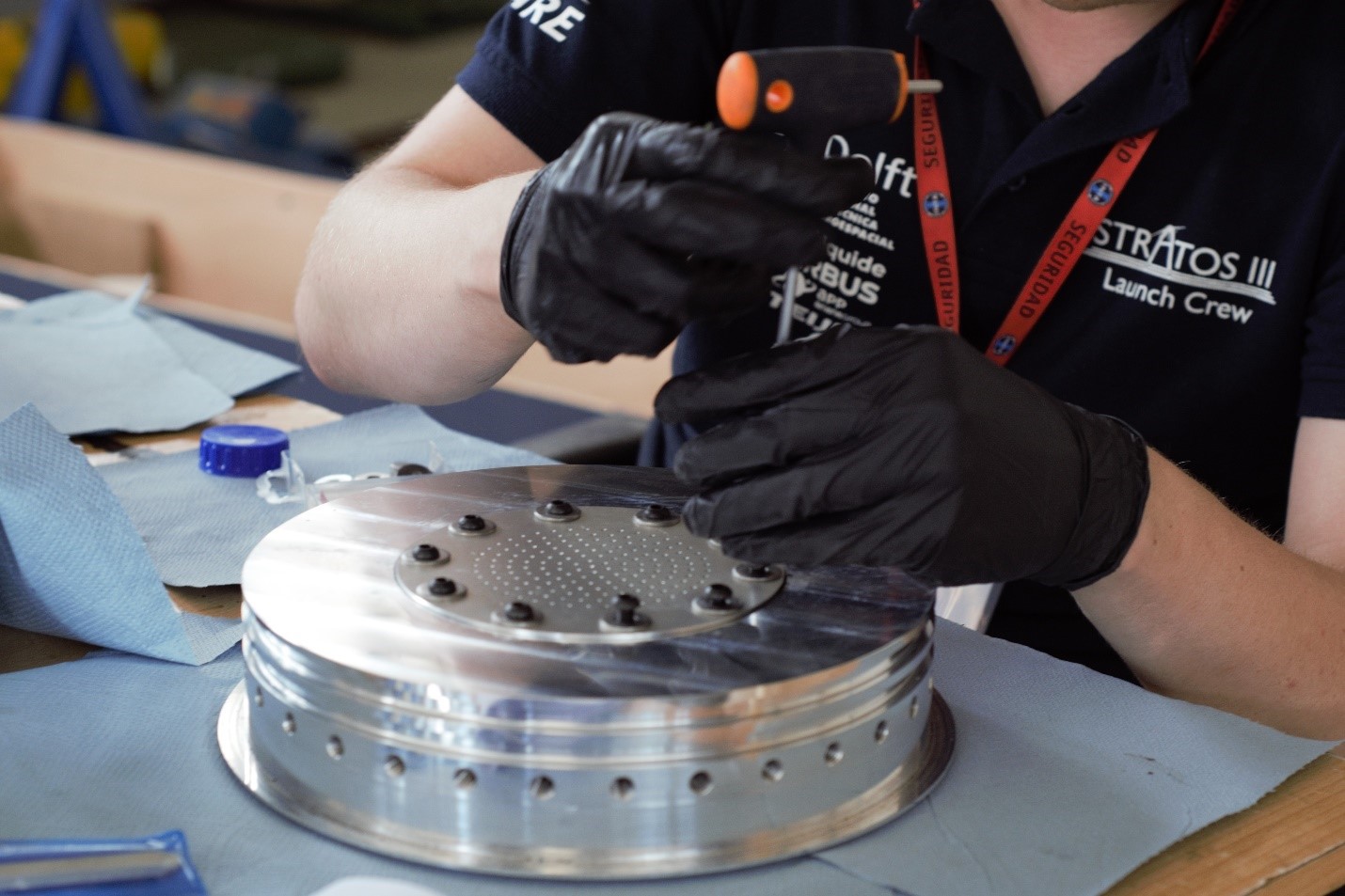
Just like your car, a rocket needs a way to get its engine started and for project Stratos we made our own ignition system! A successful igniter must be small enough to fit inside the rocket engine, energetic enough to ensure a reliable start and without any components that could damage the rest of the engine when it is ejected after ignition. Consisting of balsa wood, adhesive tape, steel wool, simple electronics and about three grams of black powder our igniter is a low tech but effective device. During the development process of our ignition system, 3D printed plastic was trialed as a replacement for the balsa wood however. This unfortunately led to an engine failure during one of the Stratos III tests, when it prematurely lost strength, deformed and lodged in the combustion chamber. This is one example of how minor changes to an ignition system can have a significant impact on an entire rocket. Of course, this is not only valid for hybrid engines as used by Stratos, but also for solid engines as used by Aether.
So how does it work? A few seconds before the countdown reaches zero the igniter is triggered by passing an electric current through a resistor. This resistor is coated with similar chemicals to a typical match so that it can then ignite the black powder which in turn burns the steel wool. In case of a hybrid engine like the DHX-400 ‘Nimbus’, liquid oxidizer from the main tank is added to the mix via a bypass ignition valve, accelerating and prolonging the small fire created by the black powder. Flames from this process can often be seen wafting from the rocket nozzle during engine tests, as can be seen in the video shown below. When the countdown reaches zero and the main valve is opened to complete the ignition of engine.
One of our sponsors – Aerospace Propulsion Products (APP) – are specialists in igniters for rocket propulsion, developing and producing reliable and restart-able ignition systems! They make both pyrogen and spark torch igniters for major European launch vehicles including the Vega, Vulcain and Vinci engines and have been doing so for over 20 years. APP has also applied space technology to other applications including new types of fire extinguishers and parachute deployment devices. We would like to thank APP for their ongoing support of the Stratos III project!
by Tom Mason
